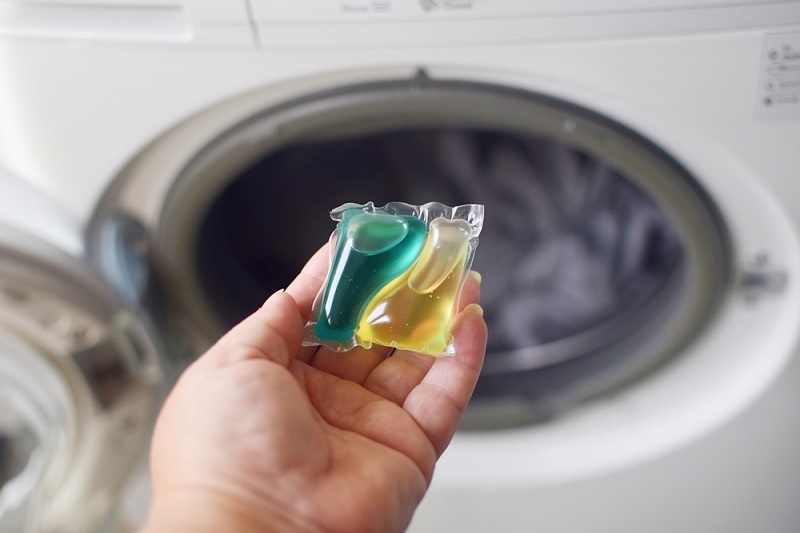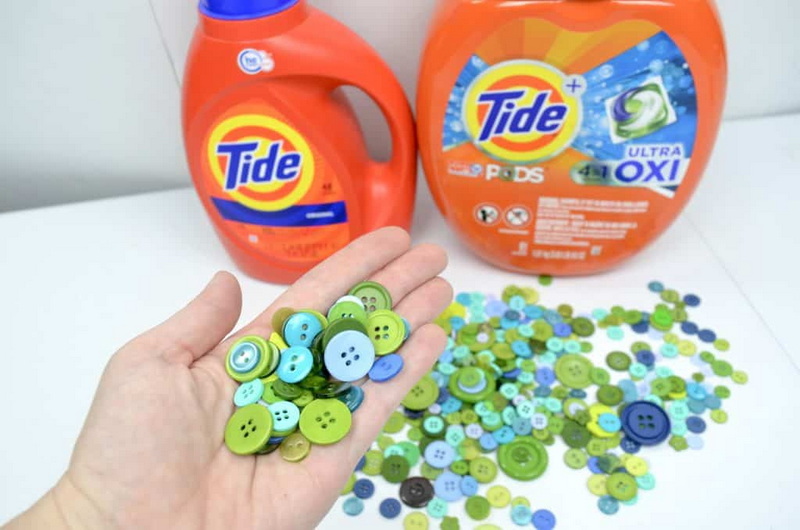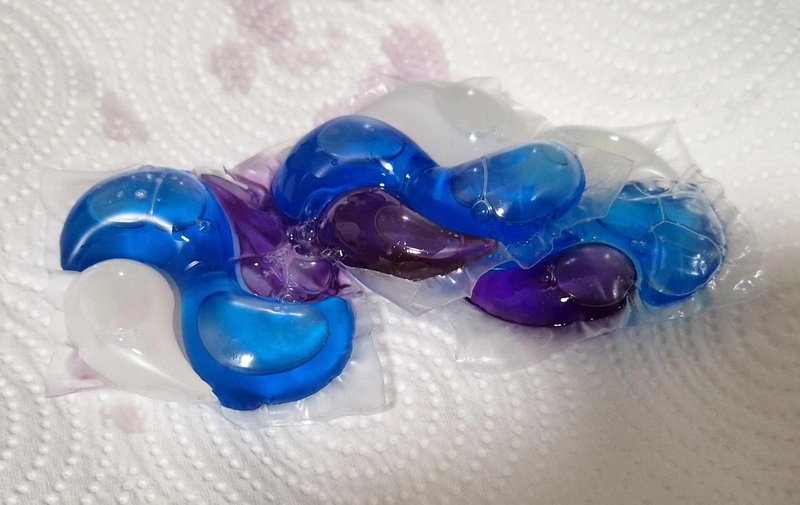Dongguan UFine Daily Chemical Co.,Ltd.
- All
- Product Name
- Product Keyword
- Product Model
- Product Summary
- Product Description
- Multi Field Search
Views: 222 Author: Tomorrow Publish Time: 11-13-2025 Origin: Site











Content Menu
● Understanding detergent formats
● Cost per load: what to look for
● Water hardness and dosage efficiency
● Cost analysis: practical scenarios
● Quality and performance considerations
● Brand and consumer psychology
● Environmental impact considerations
● Practical tips to optimize cost with pods or alternatives
● Safety and practicality considerations
● Future directions and innovations
● FAQ
>> 1. How do you calculate price per load for detergent pods?
>> 2. Do detergent pods really save money compared to liquids or powders?
>> 3. Does water hardness affect pod performance and cost?
>> 4. Are pods better for small households than large ones?
>> 5. Which detergent format is more eco-friendly?
In recent years, laundry detergent pods have surged in popularity due to their convenience, portability, and mess-free dispensing. As households seek ways to cut costs while maintaining cleaning performance, many consumers ask whether pods are cheaper than traditional liquid or powder detergents. This article examines the cost dynamics, usage efficiency, and broader considerations involved in choosing between pods and other forms of detergent.

- Pods: Pre-measured capsules containing concentrated detergent, sometimes with built-in stain removers and boosters. They are designed to dissolve completely in water and deliver a consistent dose each cycle.
- Liquid detergents: Available in various sizes, from small bottles to large jugs. They often require measuring, and dosing accuracy can vary depending on the user.
- Powder detergents: Typically sold in boxes or bags and require scooping. They can be effective for certain stains and water conditions but may leave residue if not fully dissolved.
- Label information: Detergent pods often advertise the number of loads per container. For example, a bag of pods might state 60 or 90 loads. Liquid and powder detergents usually indicate the recommended amount per load, as well as the total number of loads based on bottle size or box weight.
- Concentration: Pods are typically highly concentrated. A single pod is designed to wash one load, but the actual dosing may vary by brand and water hardness.
- Water content vs. active ingredients: Pods contain less water than liquid detergents, which can affect price per load. However, the single-dose approach means you are paying for a precise amount of active cleaning agents rather than an ambiguous splash.
- Hard water requires more detergent to achieve the same cleaning power. Some pods include boosters to address this, but the cost per load can rise in hard water regions.
- If your laundry habit involves heavily soiled items or large families, you may need more than one pod per load, depending on the brand's guidelines. This can erode any per-load cost advantages.
- Convenience: Pods are quick to drop into the drum, reducing spills and measurement errors. This simplicity can translate into time savings and perceived value.
- Packaging waste: Pods come in plastic packaging, often a plastic-coated film or plastic bottles (for the outer container). Liquid and powder detergents also generate packaging waste, but some brands offer recyclable or refillable options that can lower long-term costs.
- Storage and shelf life: Pods have a finite shelf life and must be kept dry and intact. Damaged pods or coatings can render them less effective or unusable.
- Small households (1–2 people): Pods may offer cost-per-load advantages due to reduced waste and precise dosing, especially if you do not frequently end up using extra detergent for pre-treatments or heavily soiled laundry.
- Families with moderate to heavy laundry loads: The difference in cost per load between pods and traditional detergents can blur. If you routinely run full washers and use extra detergent for stains, the per-load cost of pods may approach or exceed that of bulk liquid or powder detergents.
- Environment and usage patterns: Some households value the convenience of pods and are willing to pay a premium for a predictable dose. Others optimize cost by purchasing concentrated liquids or powders in bulk, then using a reusable measuring tool or scoop to control dosing.
- Cleaning effectiveness: Pod performance is generally comparable to their liquid counterparts for typical detergents. However, regional performance can vary based on water hardness and soil types.
- Dissolution reliability: Pods dissolve best in appropriate water temperatures and load sizes. Overloading the washer or using extremely cold water can affect dissolution, potentially reducing cleaning efficiency.
- Residue concerns: In some cases, especially with hard water or low-temperature washes, powder detergents may leave mineral residues, while pods are designed to minimize this risk. Proper dosing and water temperature management help mitigate residue issues across all formats.

- Brand premiums: Some pod brands charge a premium for the convenience factor and brand perception. It is not uncommon to see a price premium of 10–30% over comparable concentrated liquids or powders.
- Perceived value: The sense of reliability and mess-free operation contributes to consumer willingness to pay more for pods, even when a cheaper per-load option exists elsewhere.
- Packaging: Pods often require more packaging per load, and some brands use environmentally friendly packaging. However, the single-dose nature can reduce waste from over-pouring, which is a consideration for eco-conscious buyers.
- Resource use: The production and transportation footprint of pods versus bulk detergents can differ. Pods may incur higher packaging materials per load, whereas powders/liquids shipped in bulk containers can be more efficient per load if used completely.
- Compare price-per-load: Calculate the price per load by dividing the total price by the stated number of loads. This helps override sticker shock from smaller containers.
- Consider water hardness: If you live in hard-water areas, verify that the detergent format you choose performs efficiently in such conditions and consider boosters if needed.
- Use appropriate water temperature: Ensure your washer settings align with the detergent's recommendations to maximize dissolution and cleaning efficiency.
- Monitor usage: If you find you're using multiple pods per load, reassess the detergent type or concentration you're purchasing.
- Explore bulk options: If you prefer powders or liquids, seek discounted bulk purchases and use a reusable measuring device to maintain precise dosing.
- Test multi-pack deals: Some brands offer multi-pack options that reduce per-load costs but require upfront investment. Evaluate storage space and shelf life before purchasing.
- Storage safety: Keep pods out of reach of children and pets to prevent accidental ingestion.
- Handling: Pods are generally moisture-sensitive. Store in a dry place and avoid tearing the outer film, which could expose the contents prematurely.
- Disposal: Follow local guidelines for recycling and disposal of packaging.
- Allergy considerations: Some detergents include fragrance or dye allergens. If household members have sensitivities, review ingredient lists carefully.
- Shifting consumer habits: In some markets, consumers prioritize convenience and brand loyalty, which supports pod sales despite higher per-load costs. In others, price-sensitive shoppers gravitate toward bulk formats and refill models.
- Regulatory and labeling changes: Government regulations on labeling, concentrated formulations, and packaging waste influence the availability and pricing of detergent pods versus liquids and powders.
- Supply chain dynamics: Raw material costs, transportation fuel prices, and packaging material availability can cause short-term fluctuations in pod prices relative to bulk detergents.
- Eco-friendly pods: Brands are exploring biodegradable or compostable pod casings and refillable outer packaging to reduce environmental impact.
- Enhanced dosing systems: Some manufacturers are introducing adjustable-dose pods or compatibility with smart washers that optimize dosing based on load weight and soil level.
- Performance boosters: New formulations aim to improve stain removal and fabric care while maintaining low per-load costs.
The decision between laundry detergent pods and traditional detergents hinges on price per load, laundry habits, and personal preferences for convenience versus bulk efficiency. Pods provide predictable dosing, reduced mess, and strong convenience for many households, particularly smaller families or individuals who value simplicity. However, for households with high laundry frequency, heavily soiled items, or a strong emphasis on cost efficiency, bulk liquid or powder detergents often deliver a lower price per load when used carefully and in the right quantities. To determine the best option, calculate your typical monthly loads, test the price per load for the brands you consider, and factor in water hardness, wash temperature, and convenience value. Ultimately, the most economical choice aligns with your specific laundry habits, budget, and priorities.

Calculate price per load by dividing the total price by the number of loads stated on the package. For example, if a box contains 60 loads and costs $15, the price per load is $15 ÷ 60 = $0.25 per load.
Pods can save money for some households due to precise dosing and reduced waste. However, in many cases, bulk liquids or powders offer a lower price per load, especially for high-volume laundry with frequent use.
Yes. Hard water can require more detergent or additional boosters. Some pods include boosters, but you may encounter higher per-load costs if you need extra dosing to achieve the same cleanliness.
Pods are often more convenient for small households that do fewer loads and prefer mess-free dispensing. Large households may benefit more from bulk liquids or powders, where the price per load can be lower when used efficiently.
Eco-friendliness depends on packaging, production methods, and usage. Bulk liquids or powders with recyclable or reusable packaging can reduce waste per load, but pods can be designed with environmentally friendly packaging. Compare packaging materials, recycling options, and concentration levels to determine the greener choice for your situation.